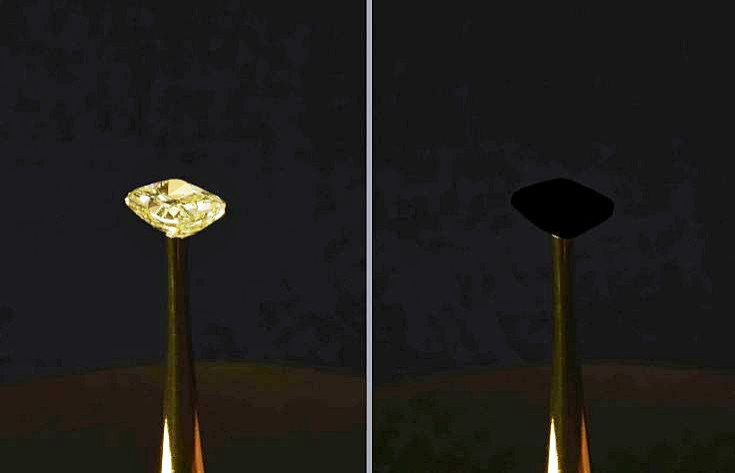MIT Researchers Engineer The Blackest Black In The World

It seems like "vantablack" is no longer the world's blackest black.
This title is being claimed by an ultrablack material that's 10 times blacker than anything previously reported, according to researchers at the Massachusetts Institute of Technology (MIT). This claim obviously means the MIT black is blacker than vantablack, which absorbs up to 99.96 percent of visible light and can be created at 400 °C (752 °F).
Vantablack is one of the darkest substances known and is unofficially regarded as the blackest black. It was developed by Surrey NanoSystems in the United Kingdom. The name vantablack is a compound of the acronym VANTA (vertically aligned carbon nanotube arrays and the color black.
Technically, black isn’t a color because it absorbs all the colors of the visible spectrum and reflects none of them to human eyes. Black is also neither a color nor a shade. It’s just black.
The MIT team said they grew their black with vertically aligned microscopic carbon nanotubes (CNTs) on a surface of chlorine-etched aluminum foil. This black, which MIT hasn't yet given a name, also captures more than 99.96 percent of any incoming light.
The diffrence between the MIT black and vantablack is the former achieves this effect at about 100°C lower than vantablack's 400°C. This much lower temperature makes the MIT black the blackest material on record.
"Our material is 10 times blacker than anything that's ever been reported, but I think the blackest black is a constantly moving target," Brian Wardle, professor of aeronautics and astronautics at MIT, who led the group, said.
"Someone will find a blacker material, and eventually we'll understand all the underlying mechanisms, and will be able to properly engineer the ultimate black."
Wardle is co-author of the paper reporting this discovery along with MIT postdoc Kehang Cui, now a professor at Shanghai Jiao Tong University.
The MIT research team published their findings in the journal ACS-Applied Materials and Interfaces last week.
They're also exhibiting their new blackest black material in an artwork that's part of a new exhibit that opened Sept. 13 at the New York Stock Exchange. The artwork, "The Redemption of Vanity," is a collaboration between Wardle and MIT artist-in-residence Diemut Strebe
It features a 16.78-carat natural yellow diamond (estimated to be worth $2 million), which the MIT team coated with the new, ultrablack CNT material. The effect is weird. The normally brilliantly faceted gem appears as a flat, black void as can be seen in the photo.




























